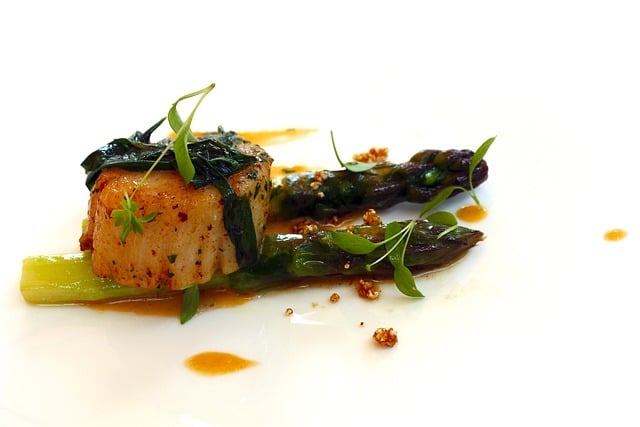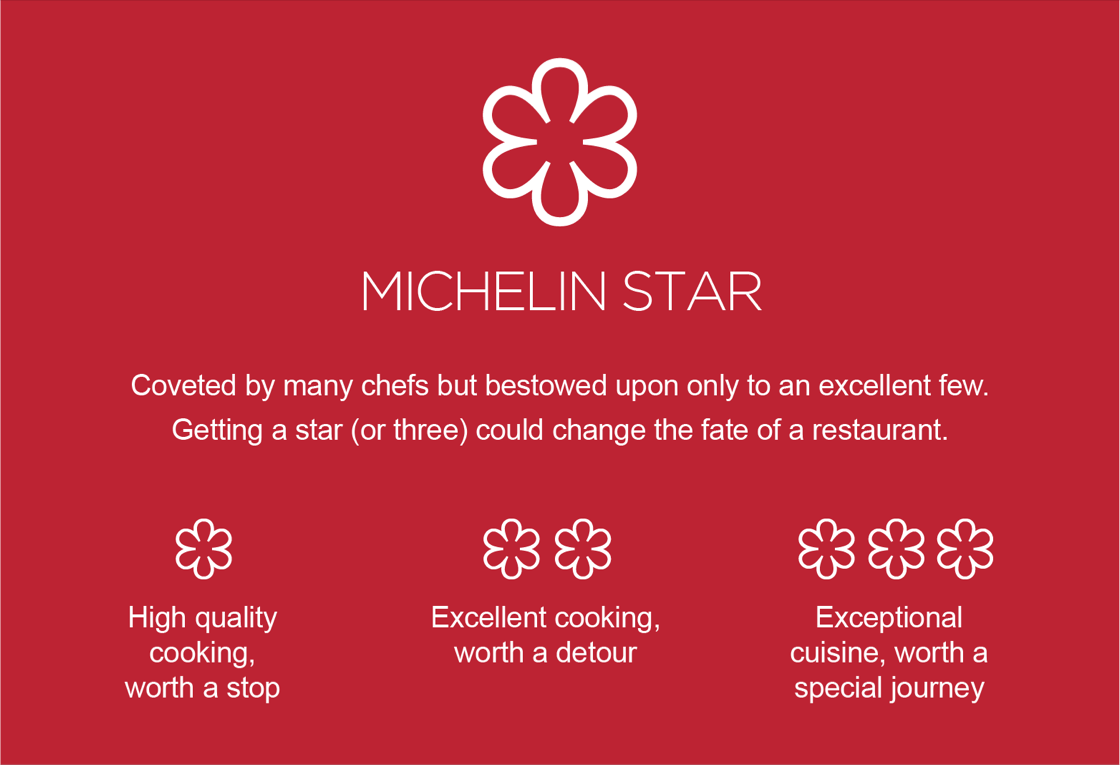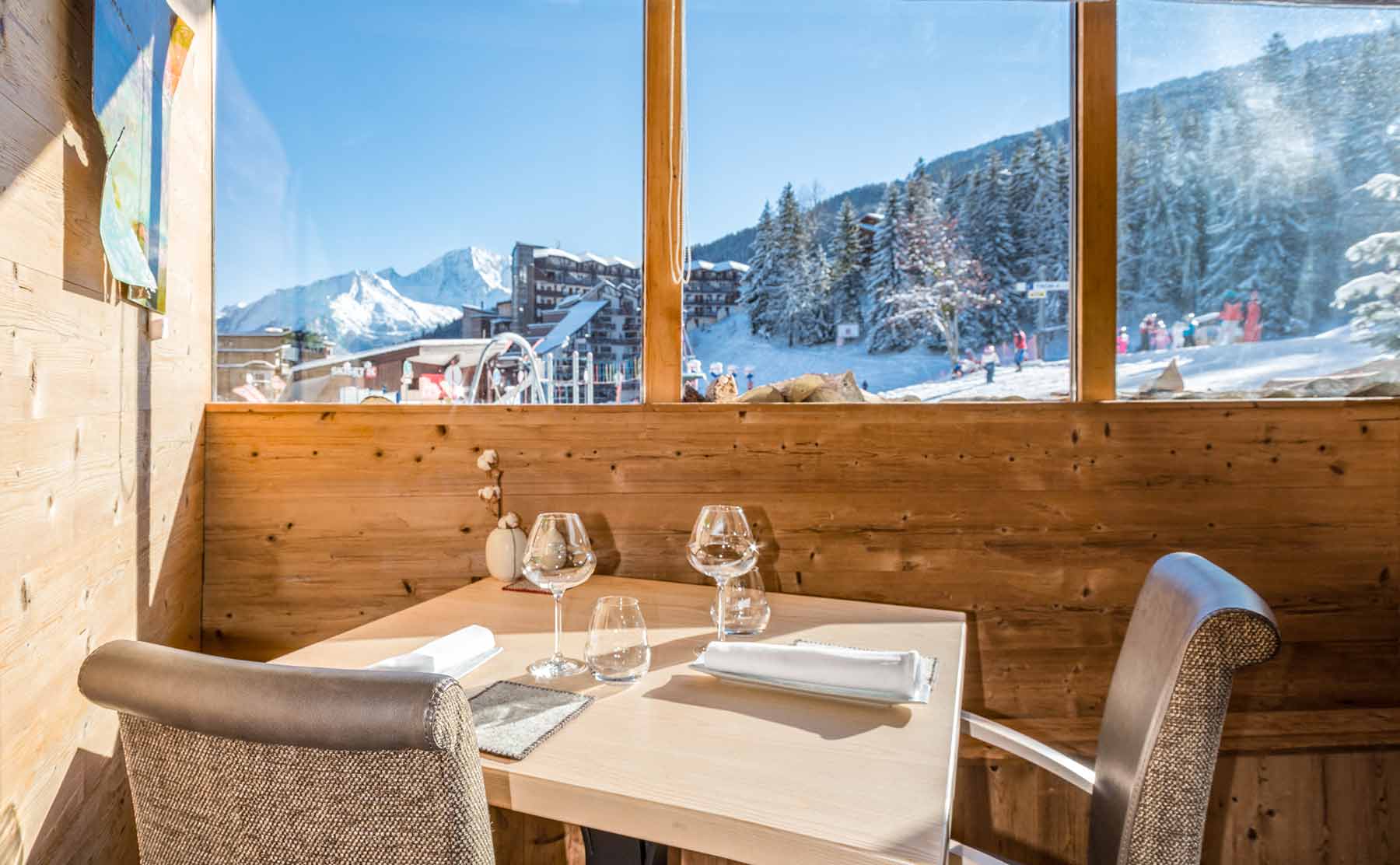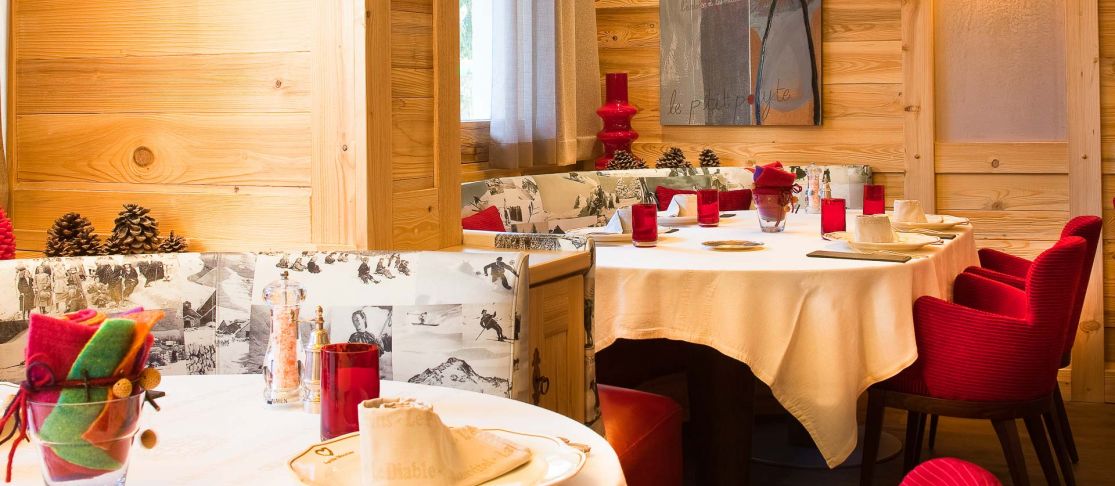Posted on 29 January 2024
If you plan to visit Michelin Star restaurants in the French Alps, be prepared for a fantastic journey into French gastronomy. The culinary experiences are nothing short of amazing, and easily match the fine dining experiences seen in Paris or Lyons. Whether you own property, or just visit the alps on holiday, the restaurants are a prime part of the experience. But while some, specialise in local cuisine, Michelin star restaurants are a completely different ball game.
French cuisine reflects cultural heritage, regional diversity, and dedication to culinary excellence. Haute cuisine boasts sophistication, diversity, and emphasis on high-quality ingredients. Marry the two together, and you have an amazing dining experience, that albeit is normally pricy, but also memorable.
The Michelin-starred restaurants in the French Alps offer delightful convergences of culinary arts, attentive service and natural beauty and testify to gastronomic heritage. Whether savouring dishes crafted from the finest local ingredients or indulging in innovative culinary creations, these restaurants elevate dining experiences.
The French Alps, renowned for their breathtaking landscapes, alpine chalets, and world-class ski resorts, are not just for winter sports enthusiasts; they also offer culinary journeys that rival the beauty of the Alpine mountains. Nestled within this alpine paradise are several Michelin-starred restaurants, each presenting local flavours, innovation, and culinary mastery. Let’s embark on gastronomic adventures as we explore the best Michelin-starred restaurants in the French Alps.
Best Michelin Star Restaurants in the French Alps
What is Haute Cuisine?
“Haute cuisine” translates to “high cuisine” in English. It refers to cooking that promotes sensory journeys, characterised by elaborate preparations, sophisticated techniques, and presentation. The pinnacle of culinary artistry is haute cuisine, often associated with fine dining establishments, although many owners of luxury ski chalets prebook their own gourmet chef to prepare the haute dishes in their homes.
Haute cuisine strongly emphasises culinary techniques, and chefs specialising in this style are often highly skilled in classical cooking methods. Precision, attention to detail, and various cooking techniques are hallmarks. The presentation of dishes is of utmost importance. Chefs carefully consider visual appeal, often creating artistic and visually stunning presentations.

High-quality, often luxurious ingredients are used. Chefs may select the finest cuts of meat, the freshest seafood, and the most exotic produce to create dishes showcasing the best flavours and textures. While rooted in classical techniques, haute cuisine allows innovation and creativity. Chefs may experiment with new flavour combinations, modern cooking methods, and unconventional ingredients to push the boundaries of traditional culinary norms.
Haute cuisine often involves multi-course tasting menus, where diners experience small, meticulously crafted dishes. Each course builds on the previous one, creating cohesive and memorable dining experiences. The service is typically formal and attentive. Trained waitstaff provide impeccable service, including detailed explanations of dishes and their preparation.
Often complemented by carefully curated wine lists, sommeliers work closely with chefs to pair each dish with wine that enhances flavours and overall dining experiences. Historically, haute cuisine has been associated with prestigious culinary schools in France, and many renowned chefs have emerged from this tradition. While it represents culinary skill and artistry, contemporary culinary trends have also embraced casual and accessible approaches to dining. As a result, dining experiences cater to diverse tastes and preferences. This is what you can expect from these French Alps Michelin Star restaurants.
What is the Michelin Guide?
The Michelin Guide, often called the “Red Guide,” reflects culinary excellence and is trusted by food enthusiasts, chefs, and travellers alike. Originating from the iconic Michelin tire company, the guide has evolved into a prestigious rating system recognising and celebrating outstanding restaurants worldwide.
The Michelin Guide’s origins can be traced back to the early 20th century when the Michelin tire company sought to boost automobile travel and tire sales. In 1900, the first edition was published, providing motorists with practical information such as maps, accommodation options, and tips for vehicle maintenance. Over time, the guide evolved to include restaurant recommendations.

The Michelin Guide’s distinctive star rating system awards one, two, or three stars based on anonymous inspections by professional Michelin inspectors. Receiving a Michelin star significantly impacts a restaurant’s reputation and business.
- One Star: An excellent restaurant, indicating consistently high-quality dining experiences.
- Two Stars: Excellent cooking, with skilfully crafted dishes, often showcasing regional flavours.
- Three Stars: Exceptional cuisine with unique and memorable dining experiences, often marked by innovation and creativity.
One unique aspect is the anonymity of inspectors. These seasoned professionals, selected for their culinary expertise, travel incognito to evaluate restaurants. Inspectors aim to experience the restaurant as an ordinary diner would by maintaining low profiles ensuring fair and unbiased assessments.
1: Flocons De Sel in Megeve
Flocons De Sel, the restaurant of celebrated chef Emmanuel Renaut, who trained under Marc Veyrat, starts its culinary experience the moment you walk in with decor to match the beauty of nature. From pure wood throughout with large bay windows to get in natural light and show off incredible mountain views, diners can expect an excellent menu featuring the best local ingredients, including fish from Lake Geneva.
Holding three Michelin Starrs, Emmanuel Renaut says his inspiration is the Alps, and his food will take diners on journeys through the meadows, plateaus, and mountains. The Chef doesn’t like grand displays or to prompt pleasure but instead says his dishes evoke emotions. This gastronomic restaurant also has a wine cellar with 1200 bottles of red, white, and sparkling roses to pair with the food.
2: Hameau Albert 1er in Chamonix Mont Blanc
Founded in 1903, this one-star, time-honoured restaurant has seen four generations of owners and many chefs. These days, owned by Perrine Maillet-Carrier and her husband, Pierre Maillet, head chef Damien Leveau is heading the way in Michelin stars for Albert 1er. Growing many herbs in their own aromatic garden near Mont Blanc, they also source regional ingredients to influence their menu. To pair their food, the Albert 1er cellar has 19000 bottles of exceptional wines, of which 640 appear on the menu.
For curious diners, sign up for wine-tasting lunches that combine fine wine and food. Otherwise, they have six menus depending on what you desire to eat and the occasion. Creative dishes at Albert 1er include deer loin, Gingerbread Viennese, red cabbage, blueberries, or arctic char straight from Lake Geneva. In contrast, the Menu de Marche surprise menus are the daily inspiration. Their Beurre Blanc sauce also comes highly recommended.
3: Le Sarkara at Hotel Le K2 Palace hotel in Courchevel
The success of two-star Le Sarkara is credited to renowned pastry chef Sebastien Vauxion, who pairs intimate restaurant settings with delectable fruit and vegetable dishes. They say, “Unique starters, modernist dishes, stunningly delicious desserts, Le Sarkara makes the meal a “singular and absolutely modern experience.” Of course, this cuisine is right at home in Courchevel, which includes 15 gourmet restaurants with Michelin stars, and many millionaire luxury ski chalets. However, Sebastien Vauxion has earned a reputation for exceptional cuisine and creative menus. As one of the top-starred restaurants with impeccable service, try the signature dishes for unforgettable experiences.
4: Le 1947 (Courchevel) – 3 Michelin Stars
Nestled in Courchevel, Le 1947 is an exclusive dining destination within the Cheval Blanc Courchevel hotel. Helmed by Chef Yannick Alléno, who stems from Paris, this three-star Michelin restaurant is named after the domain’s most prized vintage. With precision and creativity, Le 1947 delivers an extraordinary culinary experience featuring an array of dishes with innovation and respect for traditional Alpine flavours. The Chef also wins admiration for his sauces to accompany the delicate dishes. Do pre-book because the restaurant only has five tables, which, for the lucky diners, means they get all the attention from the chef on this gastronomic journey.
5: Le Farcon One Michelin Star in Courchevel
Julien Machet, the talented chef at the local restaurant sitting at an altitude of 1400 meters, truly spoils his guests with delicious food. First opening in 1990, the menu went under extensive changes in 2003, with the inspiration of Julien, who puts thought and care into every dish.

He uses the finest ingredients from Savoy to create culinary experiences that reflect the Duchy of Savoy, Val d’Aosta, Valais, Piedmont, and even the Mediterranean. And let’s not forget about the seasonal vegetables, paying tribute to his grandmother Mado’s vegetable patch. This year will be the 18th year they have carried the Michelin Star, which proves their dedication and passion.
6: Le Clos des Sens Near Lake Annecy
This lovely establishment near Lake Annecy is run by Franck Derouet and Thomas Lorival. They create menus focusing on vegetables and using ingredients from their own garden or within a 100km radius. Each dish is beautifully garnished with seasonal fruits, veggies, flowers, and herbs, and their expertise with Lake Annecy fish involves carefully considering texture and cooking techniques. They serve dishes like raw fera with flavourful garum sauce or grilled aged pike. While they primarily focus on vegetarian options, they sometimes include meat during the angling close season to honour the seasons. They also offer wine lists exclusively from local wineries and pairings of vegetable stocks, broths, and herbal teas with their dishes. The restaurant embodies camaraderie and philosophy among the kitchen and staff.
7:Le Diamant Noir in Val Thorens
In bright atmospheres, this gourmet restaurant, “Le Diamant Noir” in Val Thorens, welcomes everyone for exceptional culinary moments with extraordinary dishes. Le Diamant Noir reveals refined decor combining wood, noble materials, and warm colours. Light floods the premises through the large bay windows and reveals majestic decor. Surrounded by the 3 Valleys, diners enjoy spectacular mountain views while savouring delicious dishes. Open from 7 p.m. to 9:30 p.m. Wednesday to Sunday, throughout the day, taste suggestions from the chef at the Lounge Bar on the panoramic terrace or by the fire.
8:Baumanière 1850
In a stylish chalet, head chef Thomas Prod’Homme, who trained under celebrity chef Jean-Andre Charial at L’Oustau de Baumanière in Les Baux-de-Provence, takes this dining restaurant to new levels with fused flavours that marry the ingredients of alpine landscapes.
With wild mushrooms and pigeons as classic dishes, the complementary wine list makes this a unique gastronomic journey that won’t disappoint. Holding one star, the Michelin guide labelled it as high-quality cooking, and sitting within the Le Strato luxury hotel, diners can also enjoy impeccable service and panoramic views. The creative presentation tops off the culinary heritage showcased on plates.
9: Refined Dishes at L’Ekrin by Laurent Azoulay
L’Ekrin, a perfect fit for an elegant, luxury hotel, offers intimate settings where guests enjoy aperitifs by the open fire with gentle piano music playing. Chef Laurent Azoulay, whose parents were restaurateurs, has worked at renowned establishments like Oustau de Baumanière and under chef Pierre Gagnaire before coming here. Azoulay combines flavours and traditions from different regions, taking guests on culinary journeys through Provence and Savoie. His menu includes the best Mediterranean fish and unique ingredients like pine honey, saffron, and Savoie snails. He also sources vegetables from Éric Roy in Tours. The result, both refined and delicate, offers bold flavour combinations.
10: Le P’tit Polyte at the Chalet Mounier
This gourmet restaurant at Chalet Mounier, pays homage to the grandfather of Alban Mounier, the current owner and nickname of his father. It corresponds perfectly to the cosy atmosphere felt when discovering the room, intimate and mountainous with its decorations of blond wood, red velvet, refined objects and moving memories. On the taste bud side, “le P’tit Polyte” has nothing to envy of neighbouring peaks of Les 2 Alpes and invites you on extraordinary gastronomic journeys. The inventive cuisine combines flavours ideally based on fresh local produce and elsewhere.

How many one-star Michelin restaurants are there in France?
Altogether, there are 526 one-star restaurants. Add this to 75 two-star restaurants and 29 three-star Michelin restaurants for a staggering amount of award-winning cuisine to book tables for. In fact, France has the highest number of Michelin-star restaurants, and this record is followed by Japan.
Which French chef has 31 Michelin stars?
Joël Robuchon, a highly influential and acclaimed French chef, was born in 1945 in Poitiers, France, and entered a seminary to become a priest. However, he soon left the seminary to pursue his passion for cooking. Robuchon trained under renowned chefs, including Gaston Lenôtre, a pastry chef, and Charles Barrier, a Michelin-starred chef. In 1976, Joël Robuchon was named the “Meilleur Ouvrier de France,” a prestigious award for craftsmen in various fields. He went on to accumulate numerous Michelin stars throughout his career.
At the peak of his career, Joël Robuchon’s restaurants held a record number of Michelin stars. At one point, he operated multiple restaurants with 32 Michelin stars, a feat that set new standards. He was particularly famous for his mashed potatoes, which became legendary for their velvety texture and rich flavour. In the early 2000s, Joël Robuchon introduced the concept of “L’Atelier de Joël Robuchon,” a casual and interactive dining experience that gained popularity worldwide. The “L’Atelier” concept emphasised an open kitchen where diners could watch the chefs at work.
What is the French Gault Et Millau Award?
While the Michelin guide is great, also look out for the French Gault Et Millau Award, founded by food critics Henri Gault and Christian Millau in 1965. Like the Michelin Guide, Gault & Millau is known for rating and reviewing restaurants. The Gault et Millau Guide rates restaurants from 1 to 20. Unlike the Michelin Guide’s star system, Gault & Millau provides a single numerical score.
While the Michelin Guide often emphasises fine dining establishments, Gault et Millau covers a broader spectrum of restaurants, including traditional bistros, brasseries, and casual eateries. This showcases diverse culinary skills. Gault & Millau provide detailed reviews of each restaurant, discussing various aspects such as the quality of ingredients, cooking techniques, creativity, and service. The goal is to offer diners a comprehensive understanding of what to expect. In addition to rating restaurants, Gault & Millau presents annual awards to outstanding chefs and culinary professionals in various categories, such as Chef of the Year, Pastry Chef, and Sommelier.
Also About the French Alps
Best Ski Resorts in France: Whether you are just looking at a holiday or somewhere to buy property, the long list of ski resorts in France attracts millions of people from around the world. Additionally, forget the old age assumption that the ski resorts are just for winter. Once the snow falls away, many resorts offer sports activities and spa and wellness centres. From the shops to the slopes to the après ski, we looked over the long list to pick our favourite ski resorts and why they stand out.
Traditional Alpine food: From the best Michelin Star restaurants in the French Alps to traditional Alpine food, it should definitely be on your bucket list. The foundation of French Alpine food lies in unique environmental factors that influence the taste and quality of local produce. Fertile soil, clean mountain air, and diverse microclimates provide perfect conditions for growing many ingredients and producing dairy products. You’ll soon understand why simple yet delicious dishes are so popular and gain insight into incredible ingredients used throughout the French Alps.

